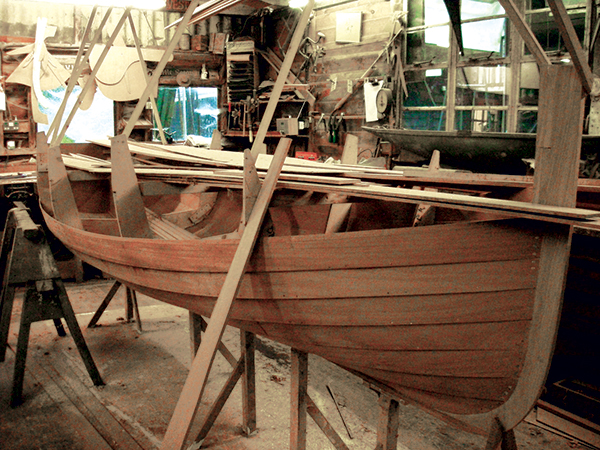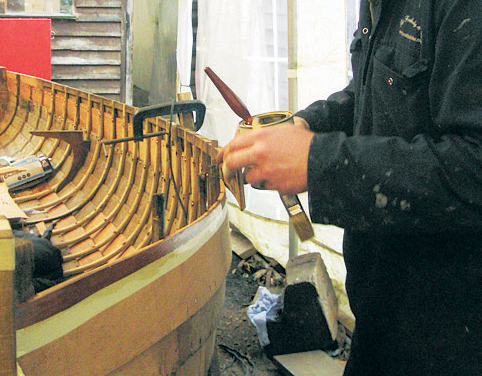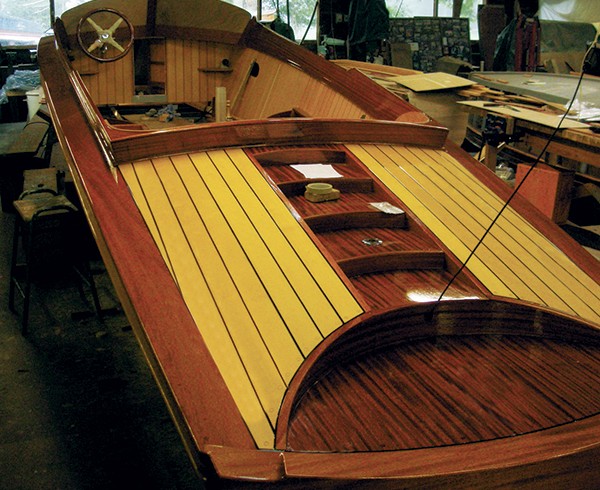
In a tree-sheltered basin on England’s River Thames, near Windsor, is a family- run, 300-year-old boatyard internationally known for its expertise with high quality wooden boats. The area is famed for smart leisure boating, and the late Peter Freebody said his forebears could be traced back to the 13th century as bargemen and ferrymen when the river was London’s transport artery.
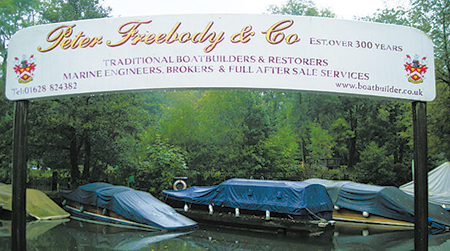
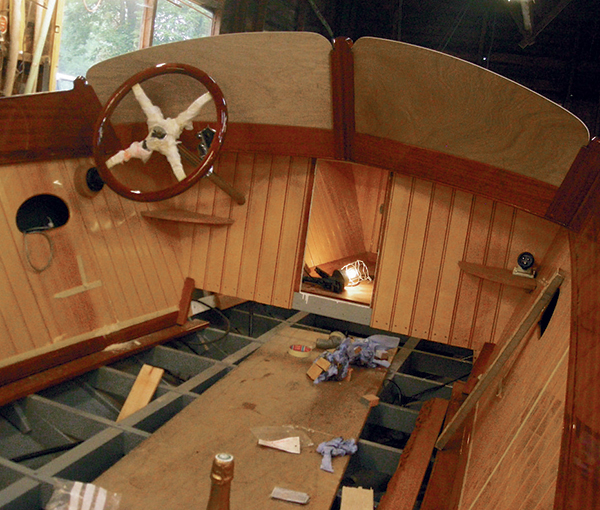
Freebody’s yard produces the “slipper stern” craft, a limousine amongst riverboats. They reproduce and restore electric canoes: a curious fashion in the late 19th century. They restore steam- powered “saloon launches,” a north Thames specialty. They are also world authorities on the upkeep and restoration of the “Riva,” defined as the Ferrari of the power boat world. In addition, customers can bring in wrecks of classic boats found in the mud somewhere, hanging on by a few fibers, and these craftsmen can rebuild them as new.
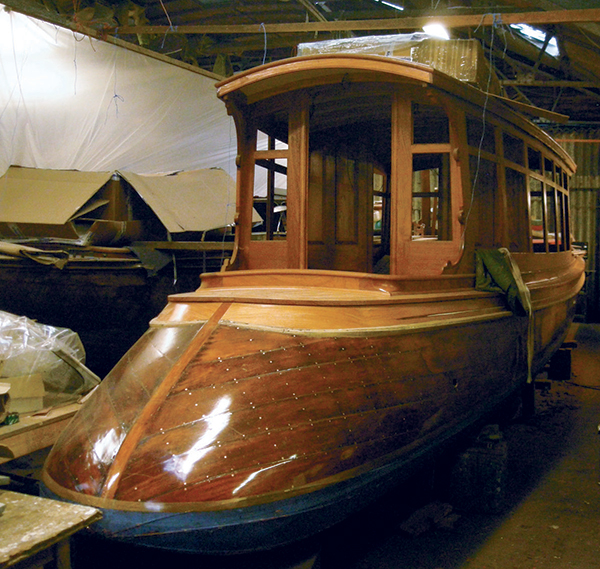
Careful Wood Selection
I was shown around the workshops by Peter’s son, Richard, who, like his father, was raised on the job. In the shop, African mahogany is the main material. It’s durable, workable and can be finished to a high standard. Timbers are selected both for resistance to constant immersion without deterioration of appearance, and for color to achieve striking contrasts. Cream- colored obeche looks fine in cockpits. Columbian pine, or Douglas fir, is used for structural work, ribs and thwarts.
Freebody’s replicates yesteryear’s fashion of striped decking — based on the look of old timber ships’ decks, which were caulked with pitch between boards and constantly scrubbed flat to swell the timbers and create a seal. The modern replicas are created with marine ply, with grooves five to six millimeters wide routed out in stripes. A specialized sealant is injected into the channels, giving a hard but flexible finish that can be smoothed and varnished over.
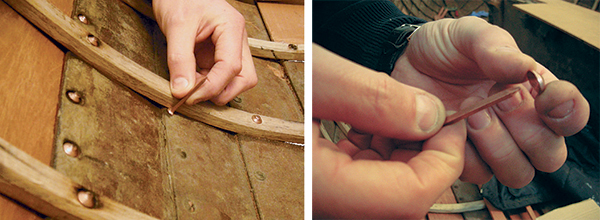
To create the deep gloss finish, a boat will be saturated for days with paintable wood preservative and, until recently, finished with a buildup of up to 14 coats of yacht, or spar, varnish, which has a large linseed or tung oil component to assist flexibility. Nowadays, several base coats of West System® high-tech epoxy resin is applied, repeatedly rubbed down and polished with a couple of coats of varnish.
“Take-up” Creates Seal
Despite working with all the splendid craft, Freebody’s staff expresses great affection for the clinker-built dinghy, the basic rowing boat you see by rivers and pulled up on beaches across the world.
Its construction has a simple effectiveness: the slight curve around the entire hull causes the top outer corner of each board to bite into the board above. When placed in the water the first time, a process called “take-up” occurs. Water is absorbed into the timber for several days and swells it. The “bite” between the boards compresses together to form a seal. Richard told me that the Vikings would put fine sawdust into the water, which absorbed between the boards to enhance the process.
The boards are fixed to the ribs using roves: square- shanked copper nails fit through from the outside of the boat into a conical washer. When bashed together using two hammers, a rivet is formed. The flattened cone develops compression. The excess nail is clipped off and the stub riveted over. During “take-up,” the nail hole seals.
Peter Freebody’s own clinker-built dinghy sits in a small workshop upstairs. No one has so far had the heart to finish it. “Maybe one day,” said Richard.
